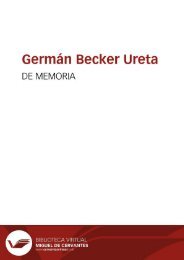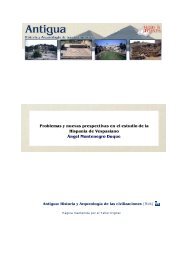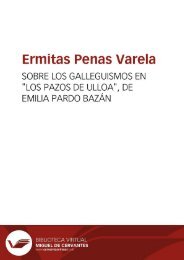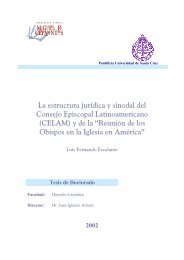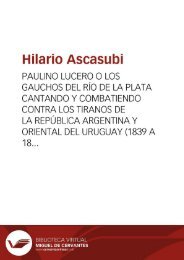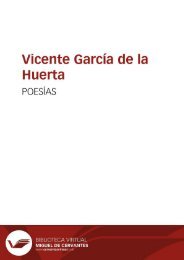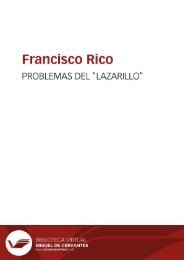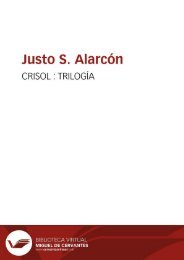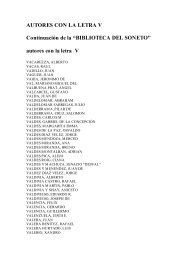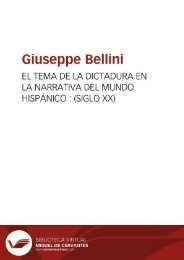You also want an ePaper? Increase the reach of your titles
YUMPU automatically turns print PDFs into web optimized ePapers that Google loves.
Anales galdosianos [Publicaciones periódicas]. Año XII, 1977<br />
It is also a reflection of her praiseworthy character. Her language is clear, humorous and succinct in<br />
a novel where a lack of ability to express oneself clearly and simply all too often indicates a lack of<br />
ability to think clearly.<br />
Not only is Encarnación's own language important; the words that <strong>Galdós</strong> uses to describe her have<br />
also been very carefully chosen. The purpose of this article is to examine the primitive and final<br />
manuscripts (especially the crossed-out portions of both) of Chapters II and III of La desheredada<br />
in order to show how <strong>Galdós</strong>' characterization of the Sanguijuelera changed as he was writing, and<br />
why those changes were necessary to her function in the novel.<br />
After allowing Encarnación to paint her own verbal portrait in conversations with Isidora and<br />
Mariano, <strong>Galdós</strong> sums up the old woman's character: « Honradez y crueldad, un gran sentido para<br />
apreciar la realidad de las cosas, y un rigor extremado y brutal para castigar las faltas de los pequeños,<br />
sin dejar por eso de quererles, componían, con la verbosidad infinita, el carácter de Encarnación la<br />
Sanguijuelera » (pp. 1004 b -1005 a ). The reader is reminded by the description that the author<br />
dedicated this novel to the schoolteachers of Spain as the only possible purveyors of the « benéficos<br />
reconstituyentes llamados Aritmética, Lógica, Moral y Sentido Común » (p. 985) which would<br />
help put Spain on the road to spiritual and social regeneration. Thus we realize that Encarnación's<br />
nickname, like her given name, was not chosen at random; it reflects her curative function (or her<br />
attempts at one). On one level the trade of leech-selling is a picturesque one which reminds us that<br />
for centuries leeches were a medical instrument; the leeches that Encarnación sells are used to bleed<br />
patients. But she herself, on another level, bears a strong relation to her worms; she is certainly not<br />
Juan Bou's hated « sanguijuela del pueblo », but rather someone who draws blood (her tongue is<br />
sharp enough) and cures sickness at the same time. Her harsh words to Isidora are ultimately intended<br />
to bring the young woman back to reality and cure her of her madness. Encarnación is one of the<br />
two main characters in the novel (again, the other is Miquis) who is equipped with enough logic and<br />
common sense to be able to attempt Isidora's cure.<br />
In her first dialogue with Isidora, the Sanguijuelera is immediately established as a woman with a<br />
very special language; in the first three paragraphs there are eight religious or Biblical references. She<br />
says of her great-nephew Mariano: « Es más malo que Anás y Caifás juntos... Yo le llamo Pecado,<br />
porque parece que vino al mundo por obra y gracia del Demonio » (p. 999 a ). Isidora is upset<br />
because Mariano must work, she would much prefer that he go to school. But her great-aunt explains<br />
that school has already been tried to no avail: « Ahí le puse en esa de los Herejes, donde dicen la<br />
misa por la tarde y el rosario por la mañana... Pero aguárdate, un día sí y otro no, me hacía novillos el<br />
29



